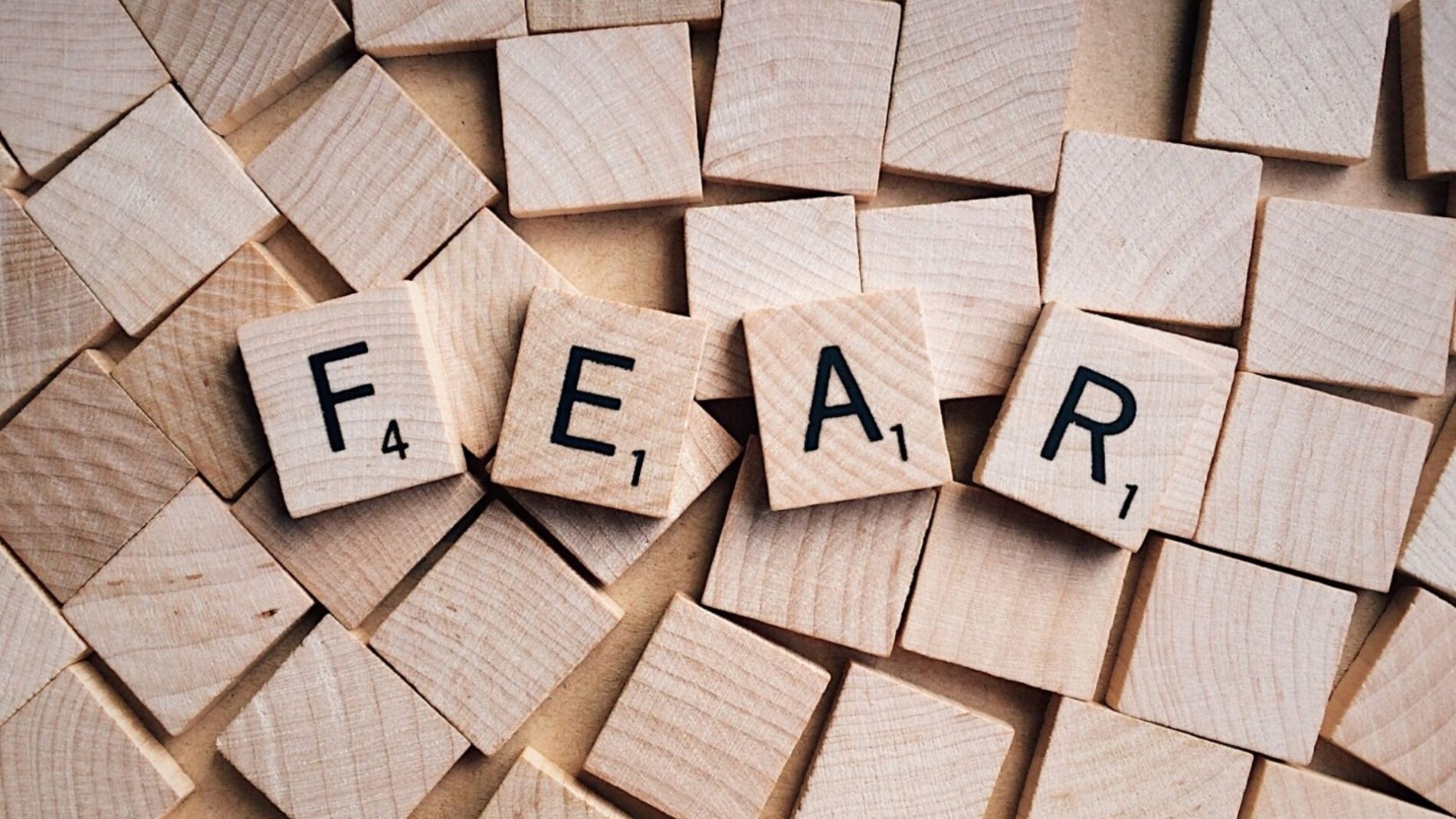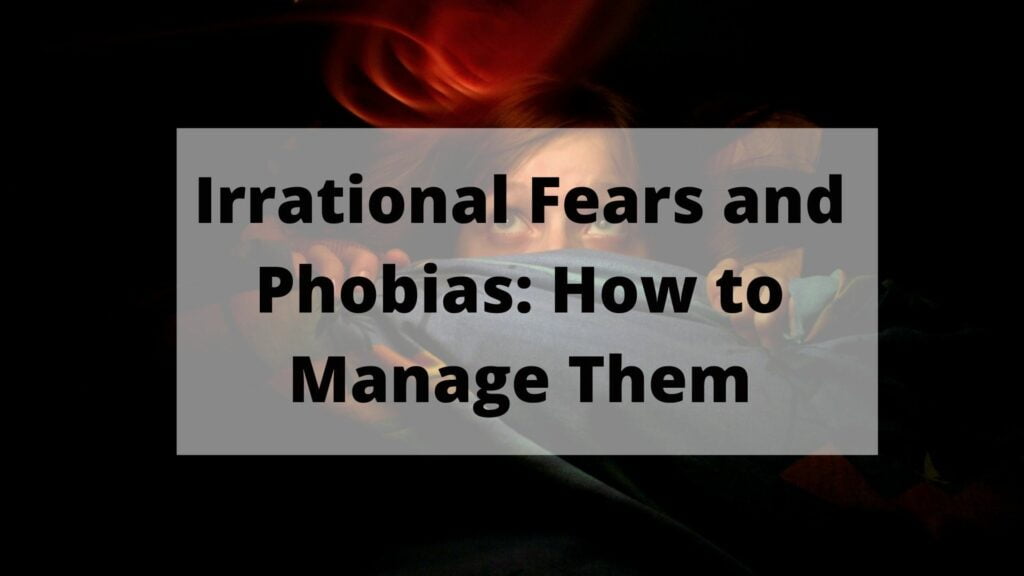We all have irrational fears. It doesn’t matter if you’re a man or woman, young or old, rich or poor, we all experience irrational fear at one time in our lives. Irrational fear is an intense and irrational desire to avoid an object of fear that poses little real danger. Many people are afraid of spiders because they inject venom into their prey while others might be afraid of heights because it can cause dizziness and vertigo. Irrational fears can often become debilitating to the point where they dominate your life and prevent you from doing things like going outside or leaving your house altogether! In this article, we will discuss irrational fears and how to manage them so that you don’t let irrational fears control your life!
What Is A Phobia?
Phobias are irrational fears of objects, concepts, or situations that usually pose no real danger.
If you have a phobia, you already know that your fear is unreal, yet you still can’t control your emotions. You may become anxious just thinking about the dreaded thing or scenario.
When you’re in exposure to the thing you’re afraid of, the terror comes on fast and strong. The experience is so nerve-racking that you may go to any length to avoid it, inconveniencing yourself or even altering your routine.
You may refuse a good job opportunity if you have claustrophobia. For example, because you would be riding the elevator to get to work. If you’re afraid of heights, driving an extra 20 miles might be the difference between life and death.
People with phobias typically go to great lengths to avoid the object or situation which causes their anxiety and may experience panic attacks when confronted by such things. Some people develop irrational fears as a result of trauma (e.g., fear of spiders following a spider bite), while others may develop irrational fears as a result of social conditioning (e.g., fear of public speaking).
The first step in overcoming a phobia is to understand it. It’s vital to remember that phobias are quite prevalent. (Having a phobia doesn’t make you insane!) It also helps to know that phobias are highly treatable. You can overcome your anxiety and dread, you can start living your life without fear.
APA and Irrational Fears
There are three categories of phobia recognized by the American Psychiatric Association (APA). They are as follows:
Specific phobia: A phobia is an intense, inexplicable dread of a specific cause.
Social phobia, or social anxiety: Being embarrassed in public or being judged by others in a social situation is a tremendous fear for someone who suffers from social anxiety. Someone with social anxiety is terrified of big social gatherings. It’s not the same as being bashful.
Agoraphobia: The fear of confined places, such as elevators or public transportation, is an example of agoraphobia. It’s usually mistaken for dread of open areas when it comes to this type of anxiety. Being in a restricted place, such as an elevator or on public transport, can induce panic attacks. People who suffer from agoraphobia will go to great lengths to avoid these situations.
Simple Phobias: are those that can trace to a specific cause, such as snakes, that is uncommon in everyday life. As a result, they are unlikely to have a significant impact on day-to-day living.
Complex phobias: such as social anxiety and agoraphobia, are defined as such since their triggers are more difficult to identify. It might be more difficult for persons with complex phobias to avoid stimuli, such as going out or being in a crowded area.
Normal Fears In Children

Many childhood fears are normal and tend to happen at particular ages. Many youngsters are afraid of the dark, for example, and may require a nightlight to sleep. That does not imply they have a phobia. In most situations, this dread will pass when they get older.
For example, the following fears are quite frequent and considered acceptable:
0-2 years – Loud noises, strangers, separation from parents, large objects.
3-6 years – Imaginary things such as ghosts, monsters, the dark, sleeping alone, strange noises.
7-16 years – More realistic fears such as injury, illness, school performance, death, natural disasters.
If your youngster’s anxiety is not affecting their daily activities or causing them a lot of pain, there’s little cause for alarm. If your child’s socializing, school performance, or sleep are in effect by their fear, you may want to consult a certified child therapist.
Normal Fears vs Irrational Fears
Fear is natural and even useful in perilous circumstances. Fear serves a defensive function by triggering the automatic “fight-or-flight” response. We can react swiftly and protect ourselves because our bodies and minds are on high alert and ready for action.
The danger is either non-existent or vastly exaggerated, as with phobias. It’s natural to be afraid of a snarling Doberman, but you’d be ridiculous to be frightened of a friendly poodle on a leash because you have a dog phobia.
Phobias and Daily Life

Phobias are irrational fears that can make daily life extremely difficult for the person who suffers from them. There is no known cure, but there are several different types of therapy available in a design to help people manage their phobia and ideally minimize its impact on their lives.
A phobia can be identified when a person starts to organize their lives around avoiding the source of their dread. It is more severe than a typical fear response. People who suffer from a phobia have an insatiable desire to keep away from anything that might cause anxiety.
Some Common Phobias
Phobias include irrational fear or anxiety surrounding dogs, heights, flying, and insects to name just a few. In addition, people often have irrational fears about other people, such as speaking in public or being in evaluation by other people. While irrational fears may not sound too serious, they can be extremely limiting to the person who suffers from them.
There are hundreds of phobias recognized by psychologists today. Some are more common than others and some are quite obscure. A few examples include:
Aibohphobia – an irrational fear of palindromes (words or sentences that are spelled the same backward and forwards)
Ombrophobophobia- an irrational fear of rain
Chaetophobia- an irrational fear of hair.
Trypanophobia, or trypophobia –The irrational fear is one rooted in disgust at clusters of small holes or bumps, such as those found in sponges.
Xanthophobia- an irrational fear of the color yellow
Claustrophobia- the irrational fear of confined spaces
Agoraphobia- an irrational fear of open places. It is the type of anxiety most often confused with agoraphobia, but it is a subset under this umbrella term. The fears are not restricted to crowded areas; they may include any situation where escape would be difficult or help unavailable in case of sudden illness.
Symptoms of Irrational Fears
The following symptoms are typical for someone who suffers from a phobia. They occur in most cases of fear:
- a sensation of uncontrollable anxiety when exposed to the source of fear
- a feeling that the source of that fear must be in avoidance at all costs
- not being able to function properly when exposed to the trigger
- acknowledgment that the fear is irrational, unreasonable, and exaggerated, combined with an inability to control the feelings
More Symptoms
A person is likely to experience feelings of panic and intense anxiety when exposed to the object of their phobia. The physical effects of these sensations can include:
- sweating
- abnormal breathing
- accelerated heartbeat
- trembling
- hot flushes or chills
- a choking sensation
- chest pains or tightness
- butterflies in the stomach
- pins and needles
- dry mouth
- confusion and disorientation
- nausea
- dizziness
- headache
Simply thinking about the phobia’s object can induce worry. Parents may notice that their children scream, become clingy, or try to hide behind a parent’s or an item’s legs in younger youngsters. They may also throw temper tantrums to demonstrate their anxiety.
A comprehensive phobia is more likely to have a negative influence on a person’s well-being than a particular phobia.
It’s also common for people with agoraphobia to have additional phobias that are in the link. Monophobia, or a dread of being alone, and claustrophobia, which is the fear of being in small places, are two examples.
A person suffering from agoraphobia may avoid going out of their house in severe cases.
Causes of Irrational Fears
The majority of phobias begin during early childhood, the teenage years, or early adulthood. It is uncommon for a phobia to develop after the age of 30 years old, and most start during early childhood.
A child can pick up a fear of dogs after seeing their breed, owner, or family member terrified by a dog attack. They may be induced by an alarming situation. A traumatic occurrence, or a parent or family member with a phobia that the kid might ‘pick up.’
Specific Phobias
The majority of cases start before the age of four to eight years. In some situations, it might be a consequence of a traumatic early experience. For example, claustrophobia may develop over time as a result of an unpleasant experience in a tiny area experienced by a younger kid.
It’s not unusual for fears to develop as a result of seeing another person or animal experiencing the same phobia. Fear of spiders, for example, may be induced in a child by witnessing his mother’s anxiety.
Complex Phobias
Although no one knows exactly what causes agoraphobia or social anxiety. Further study is in need to determine this. Researchers currently believe that complex phobias are a cause of a combination of life events, brain chemistry, and genetics.
They may also be a leftover from early humans’ behavior, which was likely in link to their level of security.
When to Seek Help
Although phobias are typical, they seldom cause significant worry or major disruption in one’s life. If you live in a city where you’re unlikely to encounter a snake, for example, having a snake phobia may have no impact on your daily routine.
However, if you have a severe fear of crowded places, living in a big city may be difficult.
If your phobia isn’t affecting your life, there’s probably nothing to worry about. However, if avoiding the thing, activity, or situation that generates your phobia prevents you from doing things you would otherwise enjoy, it’s time to seek assistance.
Consider treatment for your phobia if:
- It causes intense and disabling fear, anxiety, and panic
- You recognize that your fear is excessive and unreasonable
- You avoid certain situations and places because of your phobia
- Your avoidance interferes with your normal routine or causes significant distress
- You’ve had the phobia for at least six months
How To Treat Irrational Fears
Phobias can be extremely difficult to treat because they often require exposure therapy (a technique that exposes people to their fears) for treatment. If you suffer from a specific phobia, you may be able to use a related substitution technique (replacing irrational fear with something less harmful and more controllable).
Only about half of the people who struggle with phobias seek treatment, according to researchers.
Some drugs can manage symptoms but do not treat them effectively. These medications include sedatives used for anxiety; however, they can create additional problems, such as addiction.
Many people use breathing techniques to ease symptoms of irrational fear and stress. Meditation may also be in use for this purpose. To achieve optimal results, some therapists recommend combining these treatments with other therapies that help reduce the irrational fear response in phobias.
Conclusion
If you are afraid of something, but it doesn’t make sense to be scared of this fear, then you have an irrational fear. These fears can cause people great distress and worry because they cannot seem to get the thoughts out of their heads. This article will help you identify if your anxiety is rational or not. When we don’t know what our feelings mean, that leads us down a rabbit hole into more questions about why we feel the way that we do. In other words, when emotions are irrational, they lead to even MORE emotion! Here’s how to stop the cycle before it starts. Once again I want to reiterate one simple point-if your anxiety makes no logical sense (i.e., it doesn’t have anything to do with your current situation, it’s irrational), then you need to find a way to get rid of the anxiety.
For more information, please contact MantraCare. Anxiety is a common mental health condition characterized by persistent feelings of worry, fear, and apprehension. If you have any queries regarding Online Anxiety Counseling experienced therapists at MantraCare can help: Book a trial Anxiety therapy session


